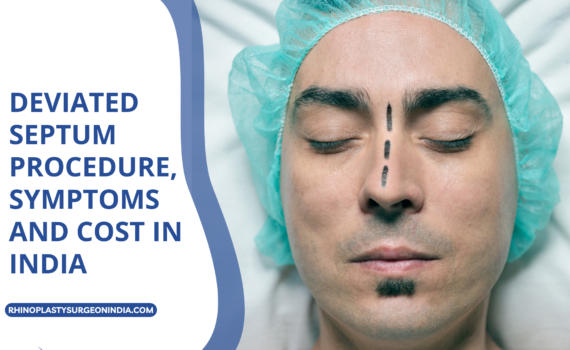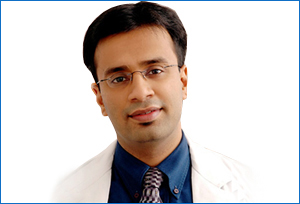Tags : deviated septum and rhinoplasty rhinoplasty with age
The nose has many idioms associated with it and all talk about pride. The nose is the prominent feature of the face, and a successful rhinoplasty looks good even as you age. This is only possible when an expert rhinoplasty surgeon does it with outstanding skills. It is a challenging task to create a nose that stands the test of time. Top rhinoplasty surgeons with extensive knowledge and expertise in all types of rhinoplasty techniques are the ones who can do a successful aging rhinoplasty.
There is no limit to the age of cosmetic rhinoplasty, and it can be done even in the teenage as long as the functional components of the nose are fully developed, and you are in generally good health. Generally, the most popular age for rhinoplasty is between 20-29 and in the 40s and 50s.
Many people believe that once they get a nose job done, it will stay the same forever which is a big misconception.
As we age, rhinoplasty gets more challenging, affecting long-term cosmetic results for the patient. Aging changes the appearance and the basic structure of the nose in order to enhance the appearance of the nose suiting the changing facial features.
What does rhinoplasty do to the nose?
Before discussing how rhinoplasty varies with age, it is essential to understand what nose surgery or a nose job does to the nose. Most rhinoplasties are reductive, which means the surgeon will manipulate the bones and cartilage to make the nose look smaller. As good as it seems, it tends to fail as one age Because though the bones stop growing as you reach puberty, body tissues change throughout the lifetime.
The nose contains bones, tissues, and cartilage which change shape as you age, and the nose starts to stretch and sag downward. As a result, the structure and skin of the nose lose strength, and with the previous rhinoplasty, the support is already weakened leading to a disfigured nose job. In addition, as the nose ages, the tip might become more extensive, making the nose look wider and heavier.
How does the nose change with age?
As we grow and attain puberty our features begin to take shape a by midlife they are thoroughly and perfectly formed. For example, a nose with the right shape and size during adolescence might seem bulbous, vast, or significant in adulthood. As time passes, the nose becomes different from what you are used to seeing in the mirror in your younger days. The changing shape of the nose also affects the air patterns.
Aging of the nose is a very normal process, but some people like it. This is because the shape and size of the nose matter, and then the rest of the face looks imbalanced and less attractive.
For a successful rhinoplasty, it is necessary to do it in a way that reinforces the structure of the nose to ensure excellent results at all times. This is why aging rhinoplasty has become an essential consideration for both men and women. The initial results are only the first step of having the ideal nose, how your nose will look years or decades after is critical for your appearance and happiness with a nose job over time.
Is the rhinoplasty procedure different for older vs. younger people?
The basic procedure for a nose job remains the same for older and younger people but they aim for different goals. In younger people, the focus is usually on.
- Reducing nasal humps
- Strengthening the nasal bridge or narrowing a wide bridge
- Correct nasal asymmetry
- Shortening a nose
- Improving breathing issues, if any
On the other hand, for old people, a rhinoplasty typically focuses on
- Correcting a droopy tip
- Shaping a bulbous nose tip to a narrower appearance.
- Reducing the size of the nose
- Correcting breathing and cartilage defects
In both, the surgeon will aim to get the most natural-looking results that don’t show any obvious signs of surgery. The primary considerations for rhinoplasty are improving or modifying the overall structure of the nose structure in a way that compliments the proportions of the face and enhances the functions of the nose. This is done by
- Modifying nose size with respect to facial balance
- Altering nose weight and its size and position about the nostrils
- Correct visible depressions and humps visible on the nasal bridge in the profile view
- Tip plasty or nasal tip correction to right drooping, upturned, hooked, or enlarged tips
- Correct large, wide, or upturned nostrils
- Correct nasal symmetry
Rhinoplasty through the ages
Rhinoplasty, a cosmetic nose job, has recently been popular among youth. Increased awareness and acceptance of nose surgeries have contributed significantly to this. Modern-day nose surgeries are simple, with fewer complications and great results. They also cost less with lower recovery time.
Rhinoplasty in the 20s and 30s
Termed youth rhinoplasty, this type of nose surgery is done to improve the cosmetic and functional appearance of the teen or the young adult’s nose to bring about more facial harmony and a rested look on the face.
A nose that does not ‘fit’ the face can cause significant mental distress in the youth. Studies have proven that many young females feel anxiety and depression because they have a nose like their father or the beak is crooked, and they shy away from class photos or selfies. The results of a youth rhinoplasty last for a long time.
Rhinoplasty in the 40s
By the age the 40s, signs of aging begin to show, and the skin demands extra attention. A nose job at this age is more focused on correcting a droopy tip and humps in the nose. However, care must be taken to ensure the supporting cartilage does not collapse. The surgeon might also use nasal grafts to reinforce the supporting structures.
Rhinoplasty in the 50s
A nose job can be easily tailored to suit a patient of any age. But in the 50s, the skin becomes thicker, so columella or tip manipulation is highly tricky. This is because the surgeon has to make the corrections aesthetically pleasing, and it shows through the skin but still does not weaken the basic structure. Other considerations also come into play in such surgeries, such as whether the patient has underlying conditions like hypertension or diabetes or other medical situations that can increase the risk of surgery.
Other things to consider are the condition and elasticity of the skin. Poor skin quality can cause easy bruising and delay the healing process. Also, the surgeon must consider the patient’s ability to adhere to pre and post-operative needs, quality of nasal cartilage and bone structure, blockages in nasal airways, etc.
How will my rhinoplasty change with the years?
Once the rhinoplasty is done, the actual effects begin to show once the swelling goes down. However, the surgery also initiates the aging process, and thus, most people see a difference in their rhinoplasty results 5-10 years post-surgery. There is no sure-shot way of predicting how the nose will look in the coming years, but here is a list of factors that can influence the results.
- The techniques your surgeon will use during rhinoplasty.
- Genetics
- Trauma or injury to the nose, especially the face.
- Skin quality and thickness
The best way to keep the rhinoplasty results looking good is to select a surgeon with extensive experience in aging rhinoplasty that can lessen the nose job’s adverse effects. In addition, taking good care of your skin and maintaining good lifestyle choices also help keep nose surgery results for a long time.
Today aging rhinoplasty is a specialty in itself. Modern rhinoplasty is more reconstructive than reductive with the same results, i.e., a more proportionate nose without removing the foundations’ strength. Best rhinoplasty surgeons use grafts to reinforce the areas that can weaken over time to improve the appearance and stability of rhinoplasty over time. If you have also been seeing changes in your previous rhinoplasty, you could consult your doctor for revision rhinoplasty.
Cost of aging rhinoplasty
The cost of rhinoplasty differs by many factors. The primary influencer on the price of nose surgery is the age and genetics of the patient. The second is the change they want to see in the nose. Other factors that cause the cost of rhinoplasty to vary include surgeon experience, primary rhinoplasty or revision rhinoplasty, cost of grafts used, the duration of hospital stay, and post-operation care. Your doctor and his team are the best people to brief you about the price and payment plans for rhinoplasty. Some types of rhinoplasties are covered by insurance, and some are not. Therefore you can discuss this with your insurance provider for the same. The main objective should be to get the best procedure done so that the results last decades.





